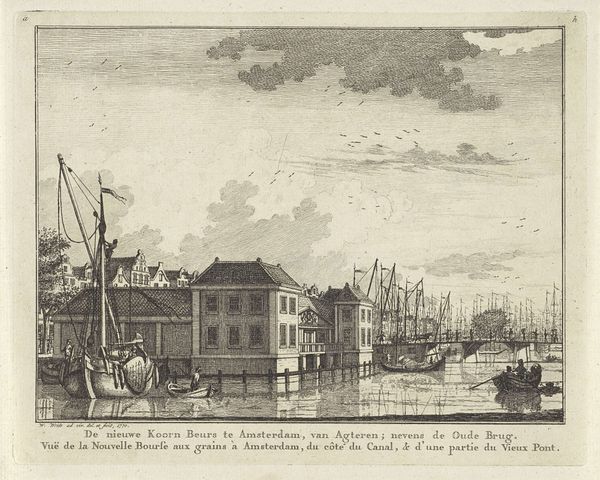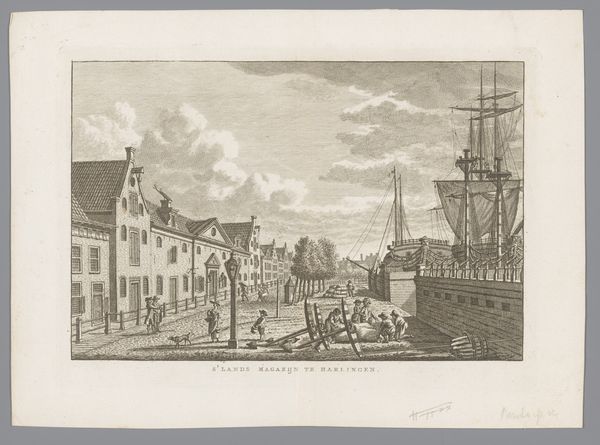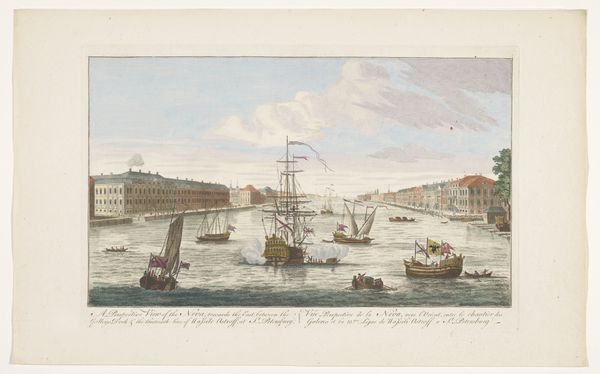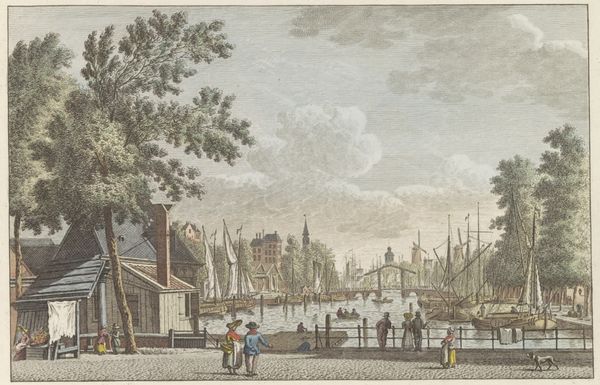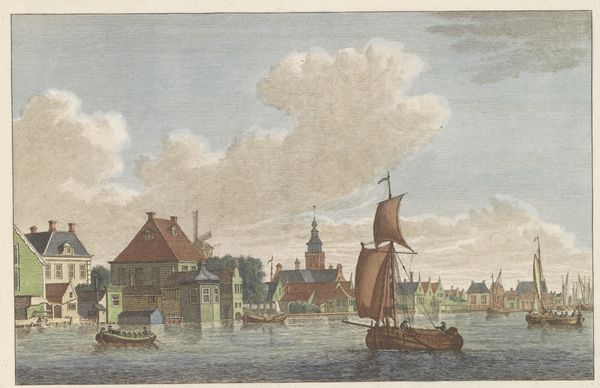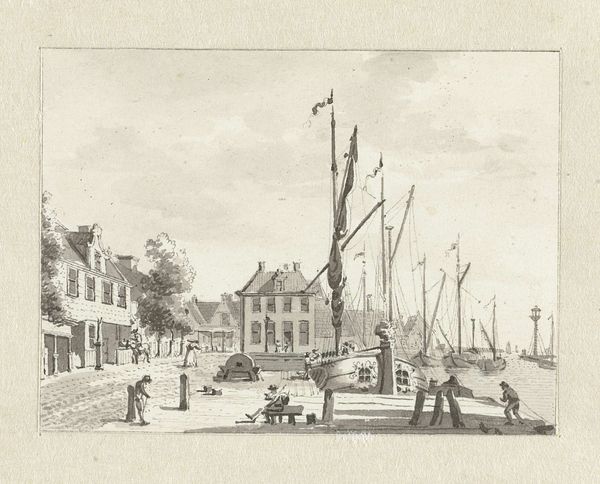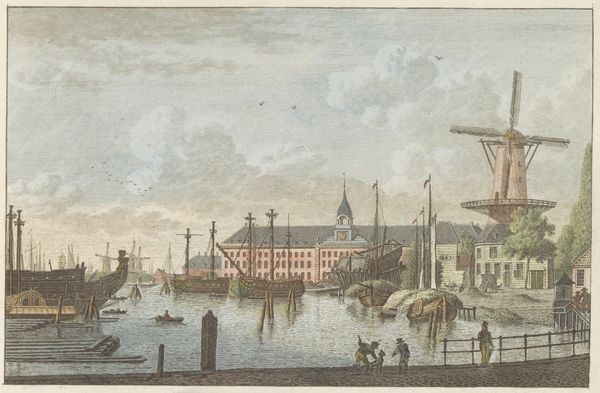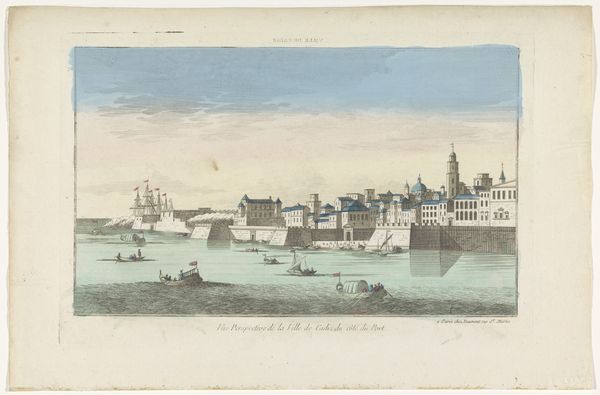
Dimensions: 264 mm (height) x 415 mm (width) (bladmaal)
Editor: Here we have J.C. Dahl's "Brygge i Bergen," created sometime between 1712 and 1812, using watercolor. It’s a lovely cityscape with such a delicate hand. What particularly interests me is the depiction of labor by the harbor; What draws your eye when you look at this? Curator: This piece, with its emphasis on the bustling Bergen harbor, provides us with insights into the material conditions of the time. The watercolor medium, quickly applied en plein air, allowed Dahl to capture the immediacy of the scene. Note how he meticulously renders the various types of boats and goods being transported. What can this tell us about Bergen as a center of trade during that period? Editor: I see different groups involved in transporting materials along the docks, likely destined for other regions. How would the availability of those materials impact artistic practice in Bergen? Curator: Exactly! The ships imply networks of exchange. Moreover, consider the materiality of Dahl’s pigments themselves; where did he source them, who processed them, and how did their availability or cost shape the aesthetic choices he made? Watercolor enabled artists to create affordable art that spoke to the rising middle class and increased consumer demand, changing production. Editor: So, the accessibility of the materials directly influences artistic expression and its consumption? Curator: Precisely. It makes you think about how art itself is tied into complex economic systems and shifts in society that supported different classes, forms of labor and technological advance in the pigments of this particular time. Editor: I never considered watercolor as a reflection of the means of production. Thanks for shining a light on those connections! Curator: It just underscores how art is deeply interwoven with material realities and societal changes. It’s all in there!
Comments
No comments
Be the first to comment and join the conversation on the ultimate creative platform.

